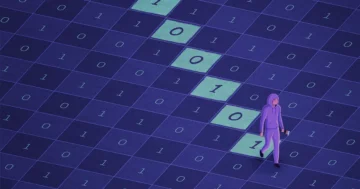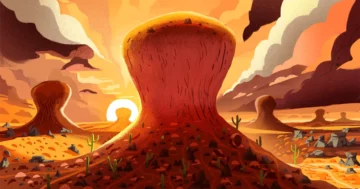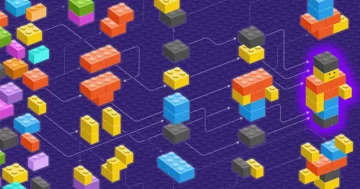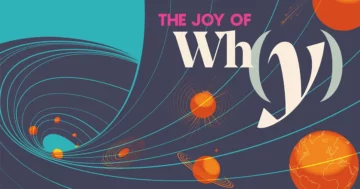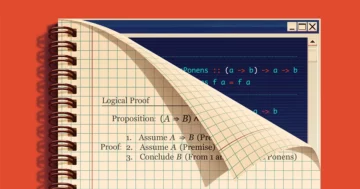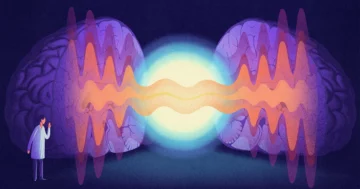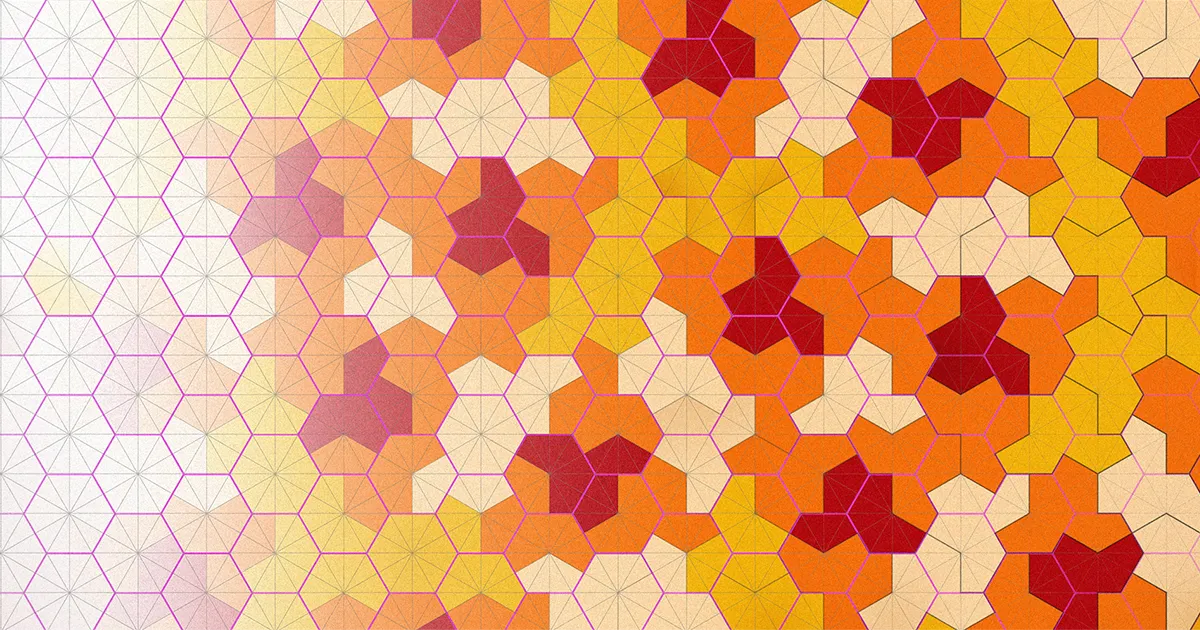
Introduction
In mid-November of last year, David Smith, a retired print technician and an aficionado of jigsaw puzzles, fractals and road maps, was doing one of his favorite things: playing with shapes. Using a software package called the PolyForm Puzzle Solver, he had constructed a humble-looking hat-shaped tile. Now he was experimenting to see how much of the screen he could fill with copies of that tile, without overlaps or gaps.
Usually when he created tiles, they would either settle into some repeating pattern or fail to tile much of the screen. But the hat tile seemed to do neither. Smith cut out 30 copies of the hat on cardstock and assembled them on a table. Then he cut out 30 more and kept going. “I noticed that it was producing a tessellation that I had not seen before,” he said. “It’s a tricky little tile.” He sent a description of his tile to Craig Kaplan, an acquaintance and computer scientist at the University of Waterloo in Canada, who immediately started investigating its properties.
On March 20, Smith and Kaplan, together with two more researchers, announced that the hat tile was something mathematicians have been seeking for more than five decades: a single tile whose copies can fill the entire plane, but only in patterns that don’t consist of a repeating block of tiles. Mathematicians call such a tile, or set of tiles, “aperiodic,” in contrast to shapes like squares or hexagons that can cover the plane in a repeating (or periodic) fashion.
The hat tile embodies “enough complexity to forcibly disrupt periodic order at all scales,” the researchers wrote in their paper. What’s more, they realized, the hat is one of infinitely many different tiles of this type.
Introduction
But Myers realized that he could use the geometry of the chevron and comet to prove that all the shapes along the slider are aperiodic, except for the two ends and the midpoint. This argument, which Kaplan called a “mathematical rabbit out of a hat,” is new to the tiling world. Prior to its discovery, the field had only three main approaches for proving aperiodicity, Goodman-Strauss said. “Now we have a fourth.”
Mathematicians are trying to wrap their heads around this new method. “I have to sit down with this thing and spend serious time on it,” Senechal said.
A natural next question, Greenfeld said, is whether mathematicians can identify some sort of source for the new tilings. In 1981, Nicolaas de Bruijn showed that Penrose tilings are the two-dimensional shadows of pieces of periodic five-dimensional tilings. “If the dynamics or the structure of these [new] tilings correspond to some higher-dimensional regular tiling, this will be extremely interesting to know,” Greenfeld said.
Socolar, as a physicist, has begun exploring the tilings’ material properties. The diffraction pattern that emerges if you shine a light through one of these tilings, he has found, has the same kind of sharp peaks researchers have observed in quasicrystals. Even so, the hat tiling “looks to me to be different from anything else I’ve seen before,” he said.
Meanwhile, Smith isn’t done with his “tricky little tile.” He intends to explore its artistic possibilities and figure out how to use colors to bring out the patterns the tile appears to insist upon. “It seems to have an attitude, if you like,” he said. “I think it should be treated with respect.”
- SEO Powered Content & PR Distribution. Get Amplified Today.
- Platoblockchain. Web3 Metaverse Intelligence. Knowledge Amplified. Access Here.
- Source: https://www.quantamagazine.org/hobbyist-finds-maths-elusive-einstein-tile-20230404/
- :is
- ][p
- a
- All
- and
- approaches
- ARE
- argument
- around
- artistic
- AS
- assembled
- At
- attitude
- BE
- before
- Block
- bring
- call
- called
- CAN
- Canada
- complexity
- computer
- contrast
- could
- cover
- created
- Cut
- decades
- description
- different
- discovery
- Disrupt
- doing
- Dont
- down
- dynamics
- either
- emerges
- ends
- Entire
- Even
- Except
- explore
- Exploring
- extremely
- FAIL
- Fashion
- Favorite
- field
- Figure
- fill
- finds
- For
- found
- Fourth
- from
- geometry
- going
- hat
- Have
- heads
- How
- How To
- HTTPS
- i
- identify
- immediately
- in
- intends
- interesting
- IT
- ITS
- jigsaw
- Kind
- Know
- Last
- Last Year
- light
- like
- little
- Main
- many
- Maps
- March
- material
- method
- more
- Natural
- Neither
- New
- next
- of
- on
- ONE
- order
- package
- Paper
- Pattern
- patterns
- periodic
- pieces
- plato
- Plato Data Intelligence
- PlatoData
- playing
- possibilities
- Prior
- properties
- Prove
- puzzle
- Puzzles
- question
- Rabbit
- realized
- regular
- researchers
- respect
- road
- Said
- same
- scales
- Scientist
- Screen
- seeking
- seemed
- seems
- serious
- set
- settle
- shapes
- sharp
- shine
- should
- single
- slider
- So
- Software
- some
- something
- Source
- spend
- squares
- started
- structure
- such
- table
- that
- The
- their
- Them
- These
- thing
- things
- Think
- three
- Through
- time
- to
- together
- university
- use
- webp
- whether
- which
- WHO
- will
- with
- without
- world
- would
- wrap
- year
- zephyrnet

